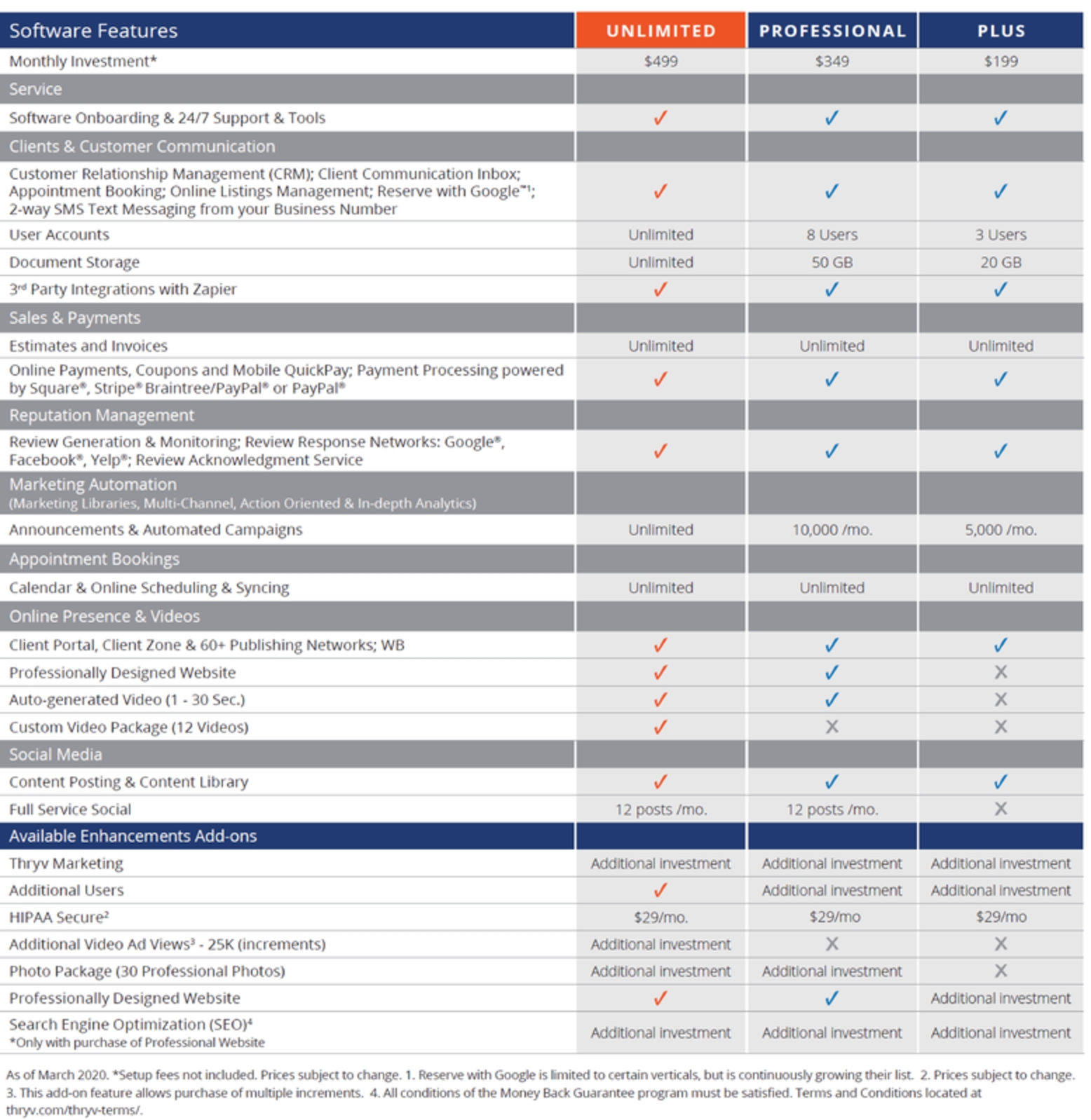FOIA Confidential Treatment Requested by Thryv Holdings, Inc. Pursuant to 17 CFR 200.83
January 1, 2018 through June 30, 2018, (iii) $300.0 million July 1, 2018 through December 31, 2018, (iv) $275.0 million from January 1, 2019 through June 30, 2019, (v) $250.0 million from July 1, 2019 through December 31, 2019, (vi) $225.0 million from January 1, 2020 through June 30, 2020 and (vii) $200.0 million after July 1, 2020.
On January 31, 2019, we entered into a subsequent amendment to the Amended and Restated Credit Agreement to amend the maturity date to September 30, 2023, and to increase the MRA to (i) $225.0 million from January 31, 2019 through December 31, 2019, (ii) $200.0 million from January 1, 2020 through June 30, 2020, (iii) $175.0 million from July 1, 2020 through December 31, 2020, (iv) $150.0 million from January 31, 2021 through June 30, 2021, (v) $125.0 million from July 1, 2021 through December 31, 2021 and (vi) $100.0 million after January 1, 2022. The existing unamortized debt issuance costs and the $0.7 million of fees and third-party costs associated with the amendment of the Amended and Restated Credit Agreement that were incurred in the year ended December 31, 2019 were deferred and will be amortized over the term of the Amended and Restated Credit Agreement.
We maintain debt levels that we consider appropriate after evaluating a number of factors, including cash requirements for ongoing operations, investment and financing plans (including acquisitions and share repurchase activities), and overall cost of capital. We are in compliance with all covenants under the Senior Term Loan and ABL Facility as of December 31, 2019. We had total recorded debt outstanding of $714.4 million at December 31, 2019, which was comprised of amounts outstanding under our Senior Term Loan of $609.4 million and ABL Facility of $105.0 million.
Off-Balance Sheet Arrangements
We do not have any off-balance sheet arrangements that are material to our results of operations, financial condition, or liquidity.
Critical Accounting Policies
Our management’s discussion and analysis of financial condition and results of operations is based on our consolidated financial statements, which have been prepared in accordance with U.S. GAAP. In preparing our financial statements, we make estimates, assumptions, and judgments that can have a significant impact on our reported revenues, results of operations and net income or loss, as well as on the value of certain assets and liabilities on our balance sheet during and as of the reporting periods. These estimates, assumptions, and judgments are necessary because future events and their effects on our results and the value of our assets cannot be determined with certainty and are made based on our historical experience and other assumptions that we believe to be reasonable under the circumstances. These estimates may change as new events occur or additional information is obtained, and we may periodically be faced with uncertainties, the outcomes of which are not within our control and may not be known for a prolonged period of time. Because the use of estimates is inherent in the financial reporting process, actual results could differ from those estimates.
We believe that the assumptions and estimates associated with revenue recognition, business combinations, goodwill and intangible assets, capitalized software and development, pensions, income taxes, and stock-based compensation expense have the greatest potential impact on our consolidated financial statements. Therefore, we consider these to be our critical accounting policies and estimates. See Note 1, Description of Business and Summary of Significant Accounting Policies, to our consolidated financial statements included elsewhere in this prospectus for further information on these and our other significant accounting policies and estimates as well as our disclosures on recent accounting pronouncements. Our most critical accounting policies are summarized below.
Revenue Recognition
Effective January 1, 2018, the Company adopted Accounting Standards Update (“ASU”) No. 2014-09, Revenue from Contracts with Customers (Topic 606), (“ASU 2014-09”), utilizing the modified retrospective method of adoption. The modified retrospective transition method does not recast historical financial statement periods; therefore, prior period revenue amounts are not adjusted and continue to be reported in accordance with our historical accounting under ASC 605. Accordingly, the consolidated financial statements for the year ended December 31, 2018 are presented under ASC 606 with a cumulative adjustment to opening accumulated deficit



